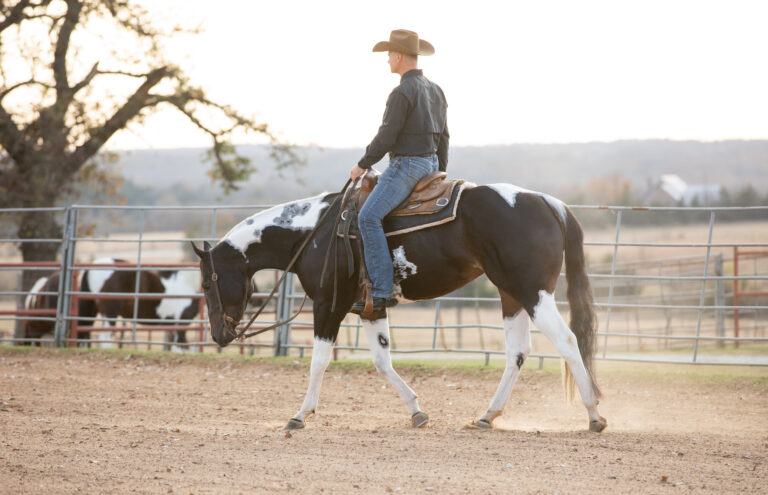
In this episode of the Disease Du Jour podcast, Jane Manfredi, DVM, MS, PhD, DACVS-LA, DACVSMR, discussed common equine muscle conditions and injuries. During the episode, she covered risk factors, clinical signs, diagnostics, treatment and management options, and more.
This episode of Disease Du Jour is brought to you by Bimeda.
Common Equine Muscle Conditions
Manfredi explained that some equine muscle conditions have a genetic basis, such as HYPP (hyperkalemic periodic paralysis) and PSSM (polysaccharide storage myopathy). Some muscle conditions stem from traumatic injuries, such as kicks or poor saddle fit. Muscle conditions can also result from chronic injuries, such as fibrotic myopathy, which can occur after an injury or injection. There are also ischemic, toxic, and exercise-induced muscle conditions.
Clinical Signs and Diagnostics
Manfredi said horses with muscle disease often present with muscle soreness, stiffness, heat, pain, and localized atrophy. The horse might be reluctant to move forward or perform their previous activities. Horses might tremble, display localized sweating, or become recumbent.
Manfredi’s process for diagnosing a horse with a suspected muscle condition begins with a good physical exam and a lameness exam. Further diagnostics might involve an exercise test, wherein she evaluates CK levels in the horse’s blood before and after exercise; a muscle biopsy; a vitamin E test; and electromyography. Other diagnostic modalities include radiography and ultrasound. “With ultrasound, we can really get a good look at the muscle tissues, see if there’s hematoma or bruising in the area, look at the fibers and compare them side to side, and then also see if there’s scar tissue in the area,” Manfredi said.
Nuclear scintigraphy is another diagnostic modality, normally followed up with ultrasound.
Treatment Plans for Equine Muscle Conditions
Manfredi said the treatment plans for muscle conditions will be unique based on the underlying cause and might involve dietary changes, vitamin E supplementation, and regular low-level exercise. “I have all my horses on vitamin E supplementation, and it should be a readily bioavailable form of it,” said Manfredi. Some conditions, such as fibrotic myopathy, might require a surgical approach.
For traumatic muscle injuries, Manfredi often recommends rest, non-steroidal anti-inflammatories, ice, and compression. If there’s swelling in the area, topical Surpass is also helpful.
Adjunct therapies might include laser, PEMF, acupuncture, chiropractic, and shock wave. For horses with focal areas of atrophy, functional electrical stimulation can help work the muscles without dynamic exercise.
Manfredi also discussed the role of controlled exercise in managing horses with muscle conditions. After the initial rest and recovery phase, she recommends focusing on improving core strength, balance, and proprioception. “One of the things that is very helpful for core strength, especially addressing the multifidus muscle, is dynamic stretching, where we’re doing range of motion with head and neck as well as belly lifts and tail tucks,” she said. Horses that don’t have full range of mobility or must be restricted from higher gaits can benefit from resistance band training.
Final Thoughts
In closing, Manfredi said she hopes people keep an open mind about muscle conditions. “If you have a lameness or you have a problem where your horse is just not behaving as they were before, I really would love people to start thinking more and more about muscle diseases,” she said. “It really would be great if that could just be a little bit more in the forefront of people’s minds.”
In the episode, Manfredi talked about muscle conditions in detail and offered more dietary and exercise recommendations.
About Dr. Jane Manfredi
Jane Manfredi, DVM, MS, PhD, DACVS-LA, DACVSMR (Equine), PG Cert, is the Mary Anne McPhail Dressage Chair in Equine Sports Medicine and an Associate Professor in the Department of Large Animal Clinical Sciences at Michigan State University’s College of Veterinary Medicine. She graduated from the Atlantic Veterinary College, did an internship at Mississippi State University, and spent time in a private mixed large animal private practice and at two Chicago racetracks before completing a large animal surgical residency at the University of Minnesota. She completed a PhD at Michigan State in Comparative Medicine and Integrative Biology and became boarded in equine sports medicine and rehabilitation before joining the faculty. Her research interests include the intersection of endocrine disorders and osteoarthritis, sports medicine and rehabilitation of the performance horse, and rider/horse/tack interactions. She has a passion for teaching and has been awarded the MSU Teacher Scholar Award as well as being named an Academy of Veterinary Educators Distinguished Expert. She is an FEI-level dressage rider and has her USDF Bronze, Silver, and Gold medals.
Related Reading
- Demystifying Equine Muscle Disease
- Diagnosing Performance-Limiting Muscle Diseases in Horses
- Managing Horses With Low Serum Vitamin E
Stay in the know! Sign up for EquiManagement’s FREE weekly newsletters to get the latest equine research, disease alerts, and vet practice updates delivered straight to your inbox.

![[Aggregator] Downloaded image for imported item #18375](https://s3.amazonaws.com/wp-s3-equimanagement.com/wp-content/uploads/2025/09/30140031/EDCC-Unbranded-26-scaled-1-768x512.jpeg)
![[Aggregator] Downloaded image for imported item #18890](https://s3.amazonaws.com/wp-s3-equimanagement.com/wp-content/uploads/2025/11/17113845/EDCC-Unbranded-3-scaled-1-768x512.jpeg)

